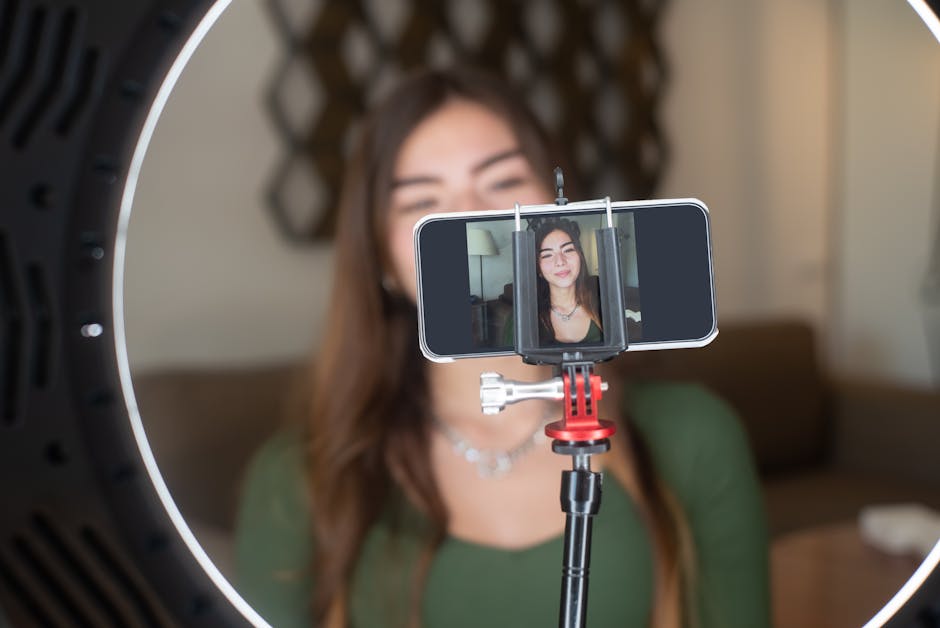Okay, so here we are in 2025, and guess what? Email marketing is still, like, a really big deal. Seriously. You might think with all the TikToks and AI stuff, email would be old news, but nope, people check their inboxes. A lot. Which means getting those email addresses, that’s where the money is, generally speaking.
Building up a good list of people who actually want to hear from you? That’s gold. It helps you stay connected, share what you’re doing, and sometimes, sell your things. But how do you actually get those addresses? It’s not always super straightforward, you know. Sometimes it’s a bit of a puzzle.
This isn’t about just grabbing any email. It’s about collecting ones from folks who are actually interested in what you have to say or offer. It’s really about getting permission. Without that, you’re just kind of yelling into the void, and nobody likes that. People normally want to feel like they chose to be there.
So, let’s talk about some ways you can get those email addresses. It’s not rocket science, but there are some good strategies that just sort of work. And some of them are a bit old school, which is fine, because old school sometimes just works.
Getting People to Opt-In on Your Website, The Usual Spots
Your website, it’s probably the first place you should think about. This is where most of your internet traffic, normally, eventually goes, right? So, it only makes sense to make it super easy for people to give you their email address while they’re there. It should be pretty obvious to them.
One common way, you’ve probably seen these a million times, are those pop-up things. When someone visits your site, maybe after like, ten seconds, or just as they’re about to leave the page, a little box pops up. It asks them to sign up for your newsletter or whatever.
Now, some people, they find these pop-ups kind of annoying, it is true. But honestly, they work. They really do get emails. The trick is to make the offer something good, something worth typing in an email for. Don’t just say “Sign up for our newsletter,” you know? Be specific.
Another spot is just embedded forms. These are usually stuck right in the content of your pages. Maybe at the bottom of a blog post, or on your “About Us” page, or a special “Join Our List” page. They’re less in-your-face than pop-ups, and some people prefer that.
Putting a form in your footer, that’s also a common idea. Every page, down at the very bottom, there’s a little spot for an email address. It’s always there, subtly asking. It’s not a flashy thing, but it catches some people who are just browsing around the whole site.
Then there are landing pages. These are pages designed for one thing only: to get an email address. You send people to them from ads or social media. They usually have one clear message and one place to sign up. No distractions, just a focused request for that email.
A sticky bar, sometimes you see these too. It’s a bar that stays at the top or bottom of the screen as you scroll. It usually has a short message and a sign-up box. It’s noticeable but not as disruptive as a pop-up can be sometimes. They are considered pretty effective, actually.
Giving Away Stuff: The “Lead Magnet” Idea
Nobody likes giving something for nothing, generally. So, to get someone’s email address, you often have to give them something in return. This “something” is what people call a lead magnet. It’s a bit of a fancy term, but it just means free stuff.
What kind of free stuff? Think about things that would be helpful to your audience. A free guide, a checklist, a short ebook, a template, or maybe a video tutorial. Something that solves a small problem for them, or teaches them a quick skill. Something they can actually use, usually.
Say you sell gardening tools. Your lead magnet could be a “Beginner’s Guide to Starting a Veggie Patch.” Or if you’re a web designer, maybe it’s “10 Things to Check Before Launching Your Website.” Make it truly useful. People will gladly give their email for useful things, sometimes.
Quizzes and surveys, those can also be quite effective. People love taking quizzes about themselves. “What Kind of Coffee Drinker Are You?” If they want to see their results, they put in their email. It’s a fun way to get information and an address at the same time.
Contests and giveaways are another classic. “Enter to win this cool thing by giving us your email!” Everyone likes free stuff, especially if it’s a good prize. This usually gets a lot of sign-ups, though sometimes the quality of the list might be a bit lower.
Webinars or free online workshops. You offer to teach something interesting, and to get access, people sign up with their email. These are great because they position you as someone who knows what they’re talking about, and you collect emails from genuinely interested parties.
This is where being helpful, it just kind of works out. The more good stuff you put out there, the more people will naturally want to hear from you. It makes perfect sense, when you think about it. Giving first, receiving later, that’s normally how it goes.
Where Else Can You Snag Those Emails? More Than Just Your Website
So, beyond your own little corner of the internet, where else can you find people who might want to be on your list? Turns out, quite a few places, actually. You just have to be a little creative about it sometimes. The internet is a big place, normally.
Social media is a big one. You’re already posting stuff on Instagram, Facebook, LinkedIn, right? Don’t forget to put a link to your email sign-up form in your bio or in your posts. Maybe even run some ads on social media that go straight to a landing page for sign-ups.
On Instagram, that link in bio is super important. Change it often to point to your latest freebie or sign-up page. On Facebook, you can add a “Sign Up” button directly to your page. It’s considered to be a pretty straightforward way to get people to click.
Running little mini-contests on social media where an email is the entry method, that often works well. Or offering a special piece of content, like a download, only available via a sign-up link in your post. People respond to these kinds of exclusive deals, sometimes.
What about offline? Yeah, that still happens! If you have a physical store, or you go to events or trade shows, you can totally collect emails there. Just a simple sign-up sheet with a pen. Old school, but still a solid way to collect contacts who’ve physically interacted with you.
Remember to be super clear about why you want their email. “Sign up for our newsletter to get updates on local events and special offers!” People are more likely to write their email if they know what they’re signing up for. Transparency is always a good thing here.
Speaking of events, if you’re a speaker or presenter, mention your email list. Tell people to go to your website and sign up for updates. Have a QR code on your last slide that goes straight to your sign-up page. This makes it super easy for them, you know.
Sometimes, if you do collaborations with other businesses, you can cross-promote each other’s lists. “Hey, go check out this other person’s cool thing, and sign up for their emails!” This expands your reach to new people who already like similar content or services.
For those interested in building their online presence, particularly businesses in the Delaware area, getting a mobile app can make all these methods even smoother. Having a dedicated app can really help with customer interaction and sign-ups. You might find a good partner for that by looking into Mobile app development Delaware. It just makes things easier, sometimes.
Keeping It Legit: Permission and Privacy Stuff
Alright, this part, it’s not the most exciting, but it’s super important. Like, really, really important. We’re talking about getting permission and respecting people’s privacy. You can’t just, you know, grab emails from somewhere and start blasting them messages. That’s a no-no.
It’s actually against the rules, and sometimes even the law, like with GDPR in Europe or Canada’s CASL. You always need to get what’s called “express permission.” That means they specifically said “yes” to receiving emails from you. A check box that’s already ticked, that doesn’t count.
So, when someone signs up, make it clear what they’re signing up for. Are they getting a weekly newsletter? Monthly tips? Just product announcements? Be upfront about it. People don’t like surprises, especially in their inbox, normally. They just want to know what to expect.
Have a clear privacy policy on your website. Explain what you do with their email address, how you protect it, and that you won’t share it with others. This builds trust, which is something you really, really need. Without trust, people won’t give you their info.
Make it easy for people to unsubscribe. Every single email you send, there should be a clear, working “unsubscribe” link. If someone wants off your list, let them go gracefully. Forcing people to stay just makes them annoyed, and that’s not good for your brand, it really isn’t.
Think about the quality of your list, not just the quantity. A smaller list of super interested people is way better than a huge list of people who don’t care, or worse, mark your emails as spam. Those spam reports, they can really hurt your email deliverability, you know.
Double opt-in, that’s a pretty good idea too. When someone signs up, you send them an email asking them to confirm their subscription by clicking a link. This makes sure the email address is real and that they truly want to be on your list. It usually means a better quality list.
It’s about playing fair. Treat people’s inboxes like you’d want yours treated. Don’t spam, don’t mislead, and always give them an easy out. That’s generally the best way to keep your email marketing going strong, and keep those good relationships going.
Keeping People on Your List Once They’re There
Okay, so you’ve done the hard part. You’ve got a bunch of email addresses. Now what? The next step, which is also really important, is to keep those people wanting to stay on your list. Getting them to sign up is one thing, but keeping them around, that’s another.
It all boils down to giving them good stuff. What made them sign up in the first place? Was it a free guide? Regular helpful tips? Keep that going. Don’t just send sales pitches all the time. Mix it up with useful information, stories, maybe some humor. People normally respond to that.
Personalize your emails a bit. If you can, use their first name. Segment your list if you can, sending different kinds of emails to different groups based on what they’re interested in. Someone who bought gardening tools might want different emails than someone interested in house plants.
Be consistent. Don’t email them five times one week and then nothing for two months. Find a rhythm that works for you and your audience, and stick to it. Whether it’s weekly, bi-weekly, or monthly, just be regular. People expect a certain cadence, sometimes.
Ask for feedback. What do they like? What don’t they like? What do they want to hear more about? This shows you care, and it helps you make your emails better. A little survey now and then can go a long way in making people feel heard and sticking around.
Remember, your email list is not just a bunch of addresses; it’s a group of people who’ve given you permission to talk to them. Treat that permission with respect, and they’ll likely stick with you for the long haul. It’s a relationship, you know.
Keep an eye on your email stats. See which emails get opened, which links get clicked. This tells you what’s working and what’s not. It’s generally a good way to figure out what your audience is responding to and what they just sort of ignore. Then you can make adjustments.
So, yeah, email marketing in 2025? Still very much alive and kicking. You just gotta be smart about getting those emails, be respectful, and then keep giving people good reasons to stay. That’s the secret sauce, generally speaking. It really is.
Frequently Asked Questions About Collecting Emails for Email Marketing
1. Is email marketing still worth doing in 2025?
Absolutely, it is. Even with social media and new tech, email is super effective. People still check their inboxes all the time, and it’s a direct way to talk to people who actually want to hear from you. It’s considered a really reliable way to communicate directly with your audience.
2. How can I get people to give me their email address without being annoying?
The best way is to offer something good in return. A free guide, a discount, or access to something exclusive. Make it easy to sign up on your website, but don’t make it feel like a trick. Be clear about what they’ll get. Pop-ups work, but they should be timed right.
3. What’s a “lead magnet” and do I need one?
A lead magnet is basically something free you offer in exchange for an email address. Like a checklist, an e-book, or a free template. Yes, you generally need one because people are more likely to give their email if they get something helpful right away.
4. Where should I put my email sign-up forms on my website?
Good places are in pop-ups, embedded within blog posts, in your website’s footer, and on dedicated landing pages. A sticky bar at the top or bottom of your site can also be pretty effective. Having them in a few different, obvious spots helps.
5. What are the rules about getting permission for emails?
You need “express permission” – meaning people specifically agree to get emails from you. Don’t pre-check boxes. Have a clear privacy policy. Always include an easy unsubscribe link in every email. It’s about respecting privacy and avoiding spam complaints.










